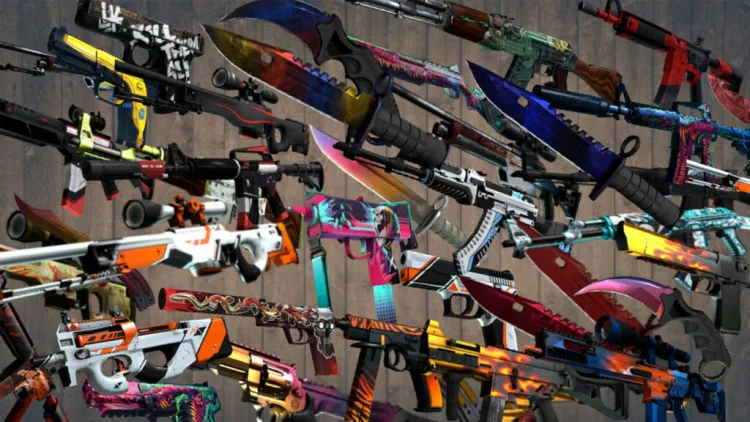Bully Tee Blog
Your go-to source for everything related to bullies and tee culture.
Trading Skins: Where Pixels Meet Profit
Unlock hidden profits in the pixelated world of skin trading! Dive in and discover how to turn virtual items into real cash!
The Ultimate Guide to Trading Skins: Tips and Strategies for Success
Trading skins can be an exciting and potentially profitable venture, but it requires a solid understanding of the market dynamics and strategies involved. To start your journey, it’s essential to familiarize yourself with the various skins available in popular games like CS:GO and Dota 2. Understanding the rarity, demand, and value fluctuations of each skin can significantly impact your trading success. Use platforms such as Steam Community Market or third-party websites to track skin values over time, and always stay updated on current trends and popular items.
Implementing the right strategies is crucial for effective skin trading. Here are some key tips to consider:
- Research and Analyze: Spend time studying market trends, player preferences, and recent trades.
- Know the Market: Different games have varying market behaviors; adapt your strategies accordingly.
- Be Patient: Successful trading often requires waiting for the right moment to buy or sell.

Counter-Strike is a popular first-person shooter game that emphasizes teamwork and strategy. Players often look for ways to improve their experience, such as learning how to kick bots from matches for a more competitive gameplay.
How to Evaluate the Value of Your Digital Skins: A Comprehensive Breakdown
In the digital age, the value of gaming skins can fluctuate dramatically based on supply and demand, rarity, and market trends. To effectively evaluate the value of your digital skins, you should start by researching their current prices on popular marketplaces like Steam Community Market, OPSkins, or Bitskins. Consider checking websites that specialize in digital item valuation to get a clearer picture of your skins' worth. You can also look at recent sales of similar items to understand what buyers are willing to pay. Keep an eye on seasonal events or updates from game developers that may impact the demand and, consequently, the value of your skins.
Another essential factor in evaluating the value of your digital skins is their rarity and condition. Skins come in various grades, from consumer to contraband, with higher grades often commanding a premium. You can categorize the skins in your inventory using the following criteria:
- Rarity: Check the skin's grade and how common it is within the game.
- Condition: Skins are graded from Factory New to Battle-Scarred, affecting their market value.
- Popularity: Some skins are intrinsically more desirable due to their aesthetic appeal or the backing of popular streamers.
Is Skin Trading Worth It? Pros and Cons You Need to Know
Skin trading, particularly in the context of gaming, has become a popular topic among players eager to monetize their in-game assets. Is skin trading worth it? This question has multiple facets. On one hand, the potential for profit can be considerable; rare skins can sell for high prices and offer a significant return on investment. Additionally, the thrill of hunting for valuable skins can enhance the gaming experience, making it more engaging. However, players must also navigate various risks, including fluctuating market values and the potential for scams, which can lead to financial loss.
When considering the pros and cons of skin trading, it's essential to weigh your options carefully. Here are some key points to consider:
- Pros: Opportunity for financial gain, enhanced gaming experience, and access to exclusive items.
- Cons: Market volatility, risk of scams, and potential account bans from certain games.
Ultimately, the question of whether skin trading is worth it depends on individual preferences and risk tolerance. Players should research thoroughly before diving into the skin trading market to make informed decisions.